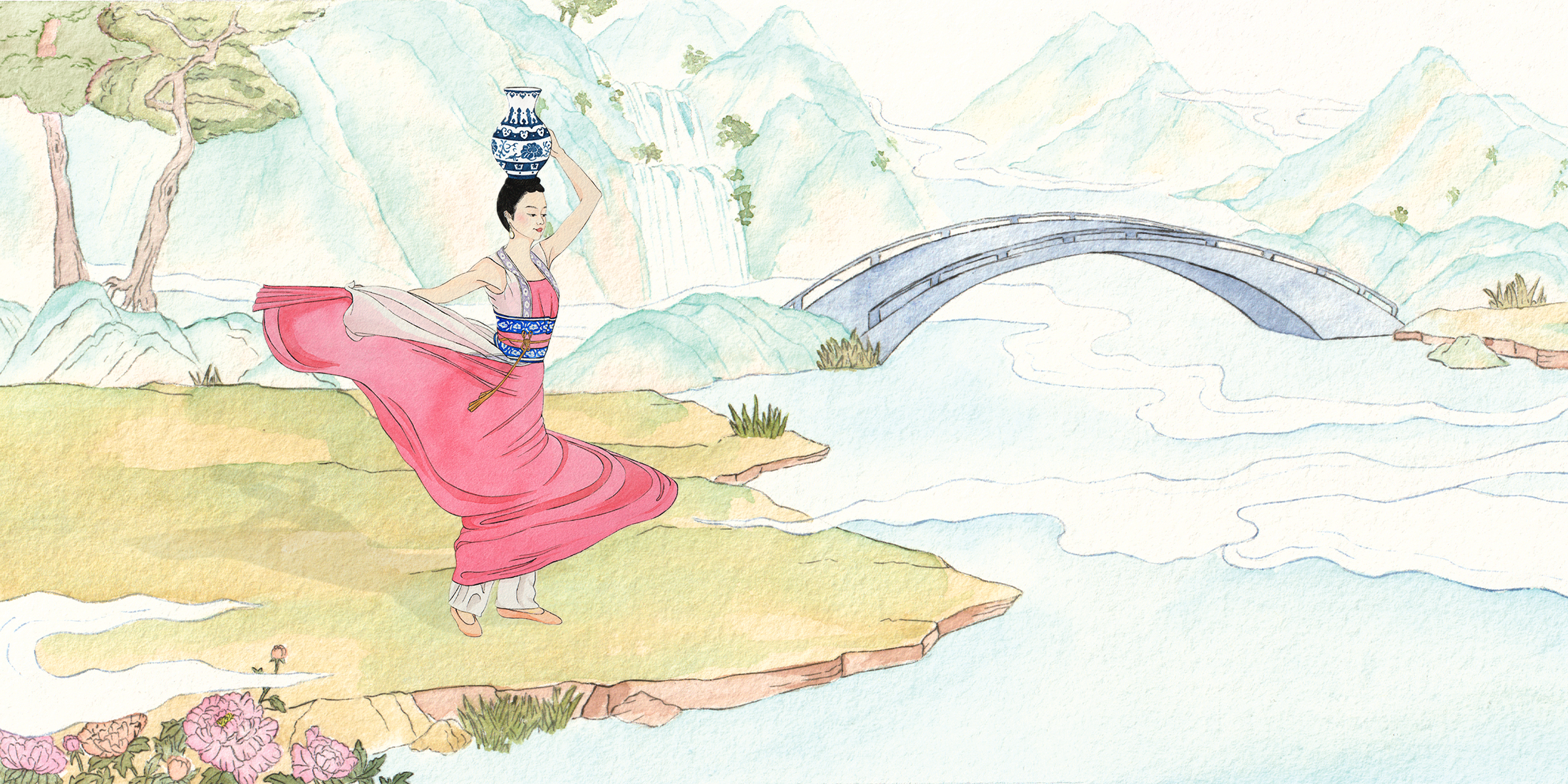
Ceramic Culture Behind New Porcelain Charm Design
Shen Yun Collections’ latest Porcelain in the Balance Charm draws inspiration from the elegant blue-and-white porcelain vase featured in Shen Yun’s dance Porcelain in the Balance. The vase’s design showcases the entwined peony motif, representing prosperity and blessings. Let’s explore the rich culture and legends behind this exquisite creation.
Porcelain in the Balance Dance
The Porcelain in the Balance dance embodies feminine poise, harmony, and inner strength. Female dancers balance porcelain jars or vases on their heads, moving with elegant precision and calm composure—each step reflecting unity between body, mind, and spirit.
This performance traces its roots to ancient Chinese etiquette training. In the Book of Rites (Yuzao), noblewomen were taught to “walk while balancing objects,” a discipline meant to cultivate serenity, steadiness, and dignity. Over time, this practice evolved into a form of folk dance performed during festivals and ceremonies across China.
In southwestern and some central regions, women often performed water-jar dances to pray for rain and the blessings of the earth. The water inside the jar symbolizes life and nourishment; to balance it gracefully upon one’s head expresses reverence for heaven and gratitude for nature’s bounty. The Porcelain in the Balance dance carries on this timeless tradition.
Ceramic Myths and Legends
Some scholars trace the origins of Chinese ceramic culture to the myth of Nüwa, the goddess who created humanity, calling her “the progenitor of ceramics and mother of humankind.” In the legend, Nüwa molds humans from clay and reinforces the heavens with stones. This story is seen as the mythic origin of ceramic artistry: shaping humans like molding clay, reinforcing the sky like firing porcelain to make it strong. Both humans and vessels are born from earth. Thus, the art of ceramics is, in essence, an art of shaping life and the universe.
Legend tells of a Tang Dynasty craftsman, named Tao, who dedicated decades to porcelain-making but repeatedly failed. One night, a heavenly maiden appeared in a dream to Tao, saying: “Porcelain is the essence of heaven and earth. Fire must come from the heart, glaze must come from virtue.” Enlightened, he realized that porcelain-making was not merely a skill, but a matter of the heart. With a clear mind and sincere intentions, he finally produced masterful works.
Similarly, a famous Song dynasty porcelain artisan is said to have experienced repeated kiln failures due to pride. One night, he dreamt of a divine figure who warned him: “Fire is hasty and unkind; it must be tempered with virtue.” Awakening with sincere repentance, he approached his craft with humility and eventually succeeded in creating exquisite celadon porcelain.
Such stories, passed down through China’s rich history, convey the idea that good craftsmanship requires cultivation of the mind.
Peony-and-Vine Motif
In Shen Yun’s Porcelain in the Balance, elegant porcelain vases are poised atop dancers’ heads, moving gracefully with their steps. If you look closely you will see the exquisite peony pattern on the blue-and-white porcelain vase featured in the dance. It is a carefully chosen design known as the entwined peony motif—where graceful peony petals intertwine with flowing vines. The peony symbolizes prosperity, perfection, and abundance, while the continuous vines represent harmony with nature and the continuity of life.
The entwined peony motif is often found on porcelain, brocade textiles, architectural paintings, and palace decorations, thus embodying elegance and timeless beauty.
In Chinese culture, the word for “vase” (píng) sounds like “peace” (píng), giving the flower vase an added meaning of peace and safety.
May Shen Yun Collections’ Porcelain Grace Charm bring peace into your life and let the beauty of Shen Yun accompany you every day!

























